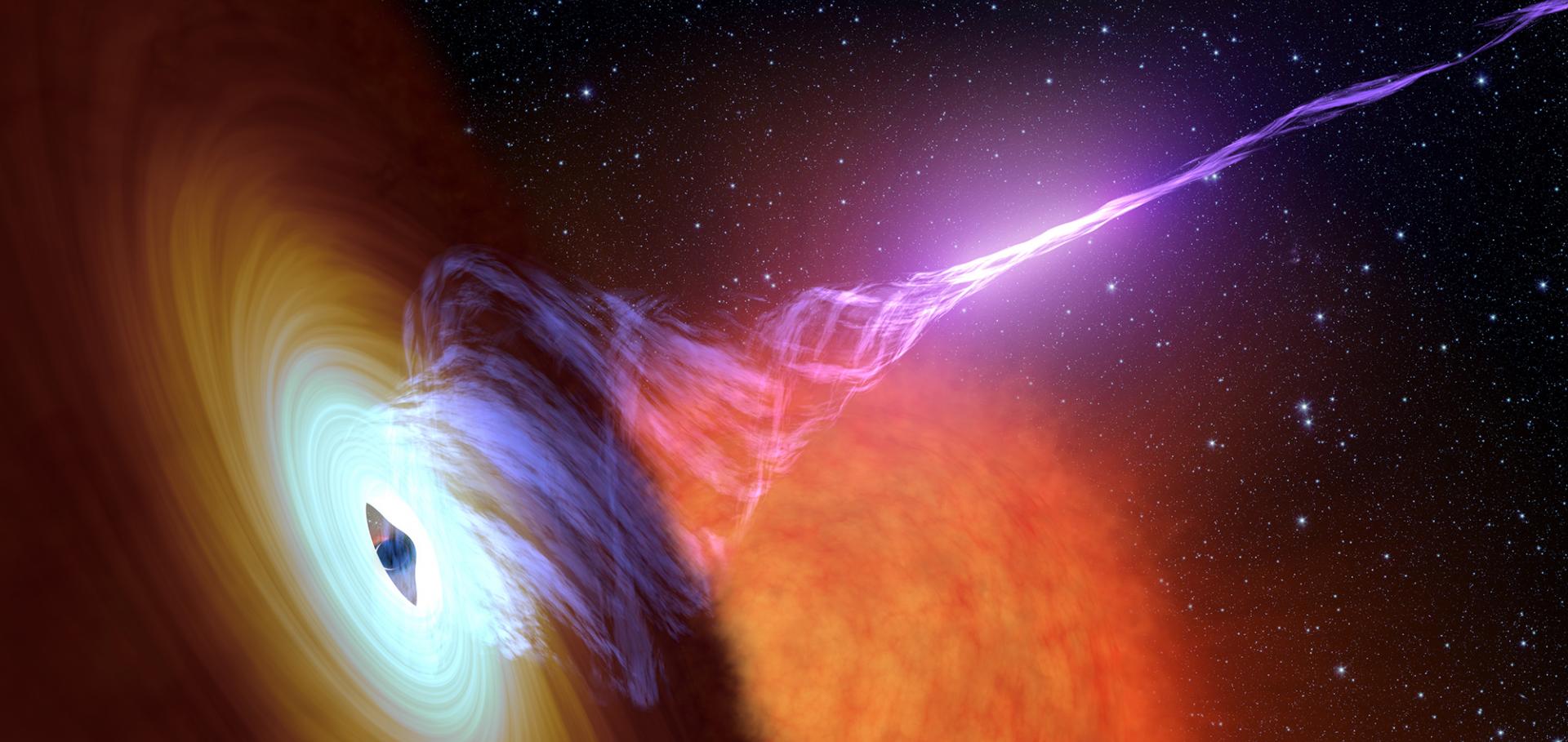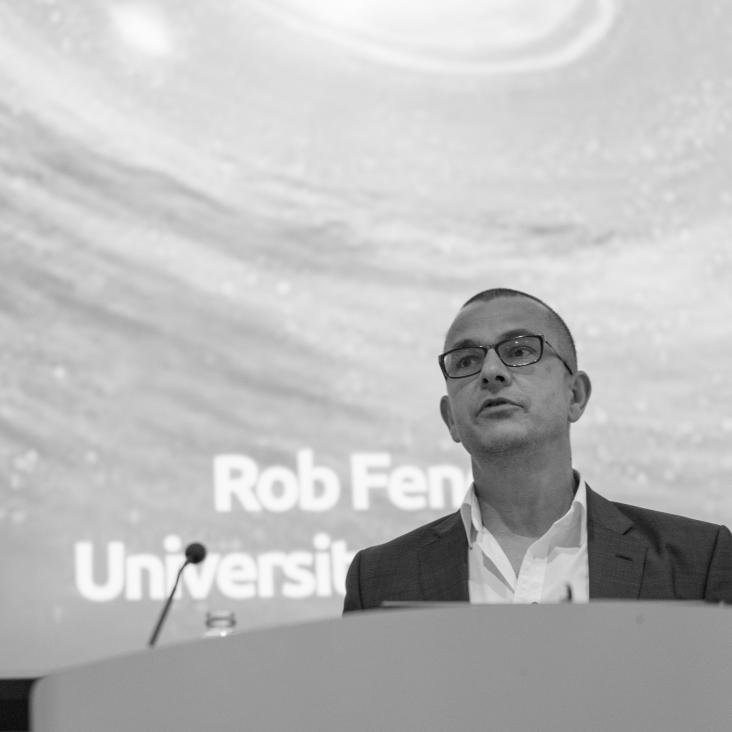The evolving polarized jet of black hole candidate swift J1745-26
Monthly Notices of the Royal Astronomical Society 437:4 (2014) 3265-3273
Abstract:
Swift J1745-26 is an X-ray binary towards the Galactic Centre that was detected when it went into outburst in 2012 September. This source is thought to be one of a growing number of sources that display 'failed outbursts', in which the self-absorbed radio jets of the transient source are never fully quenched and the thermal emission from the geometrically thin inner accretion disc never fully dominates the X-ray flux. We present multifrequency data from the Very Large Array, Australia Telescope Compact Array and Karoo Array Telescope (KAT- 7) radio arrays, spanning the entire period of the outburst. Our rich data set exposes radio emission that displays a high level of large-scale variability compared to the X-ray emission and deviations from the standard radio-X-ray correlation that are indicative of an unstable jet and confirm the outburst's transition from the canonical hard state to an intermediate state. We also observe steepening of the spectral index and an increase of the linear polarization to a large fraction (50 per cent) of the total flux, as well as a rotation of the electric vector position angle. These are consistent with a transformation from a self-absorbed compact jet to optically thin ejecta - the first time such a discrete ejection has been observed in a failed outburst - and may imply a complex magnetic field geometry. © 2013 The Authors Published by Oxford University Press on behalf of the Royal Astronomical Society.Transient astrophysics with the square kilometre array
Proceedings of Science 9-13-June-2014 (2014)
Abstract:
This chapter provides an overview of the possibilities for transient and variable-source astrophysics with the Square Kilometre Array. While subsequent chapters focus on the astrophysics of individual events, we focus on the broader picture, and how to maximise the science coming from the telescope. The SKA as currently designed will be a fantastic and ground-breaking facility for radio transient studies, but the scientifc yield will be dramatically increased by the addition of (i) near-real-time commensal searches of data streams for events, and (ii) on occasion, rapid robotic response to Target-of-Opprtunity style triggers.An Overview of Jets and Outflows in Stellar Mass Black Holes
Chapter in The Physics of Accretion onto Black Holes, Springer Nature 49 (2014) 323-337
The Youngest Known X-ray binary: CIrcinus X-1 and ITS natal supernova REMNANT
Astrophysical Journal 779:2 (2013)
Abstract:
Because supernova remnants are short-lived, studies of neutron star X-ray binaries within supernova remnants probe the earliest stages in the life of accreting neutron stars. However, such objects are exceedingly rare: none were known to exist in our Galaxy. We report the discovery of the natal supernova remnant of the accreting neutron star Circinus X-1, which places an upper limit of t < 4600 yr on its age, making it the youngest known X-ray binary and a unique tool to study accretion, neutron star evolution, and core-collapse supernovae. This discovery is based on a deep 2009 Chandra X-ray observation and new radio observations of Circinus X-1. Circinus X-1 produces type I X-ray bursts on the surface of the neutron star, indicating that the magnetic field of the neutron star is small. Thus, the young age implies either that neutron stars can be born with low magnetic fields or that they can rapidly become de-magnetized by accretion. Circinus X-1 is a microquasar, creating relativistic jets that were thought to power the arcminute-scale radio nebula surrounding the source. Instead, this nebula can now be attributed to non-thermal synchrotron emission from the forward shock of the supernova remnant. The young age is consistent with the observed rapid orbital evolution and the highly eccentric orbit of the system and offers the chance to test the physics of post-supernova orbital evolution in X-ray binaries in detail for the first time. © 2013. The American Astronomical Society. All rights reserved..Black hole spin measurements through the relativistic precession model: XTE J1550-564
(2013)


